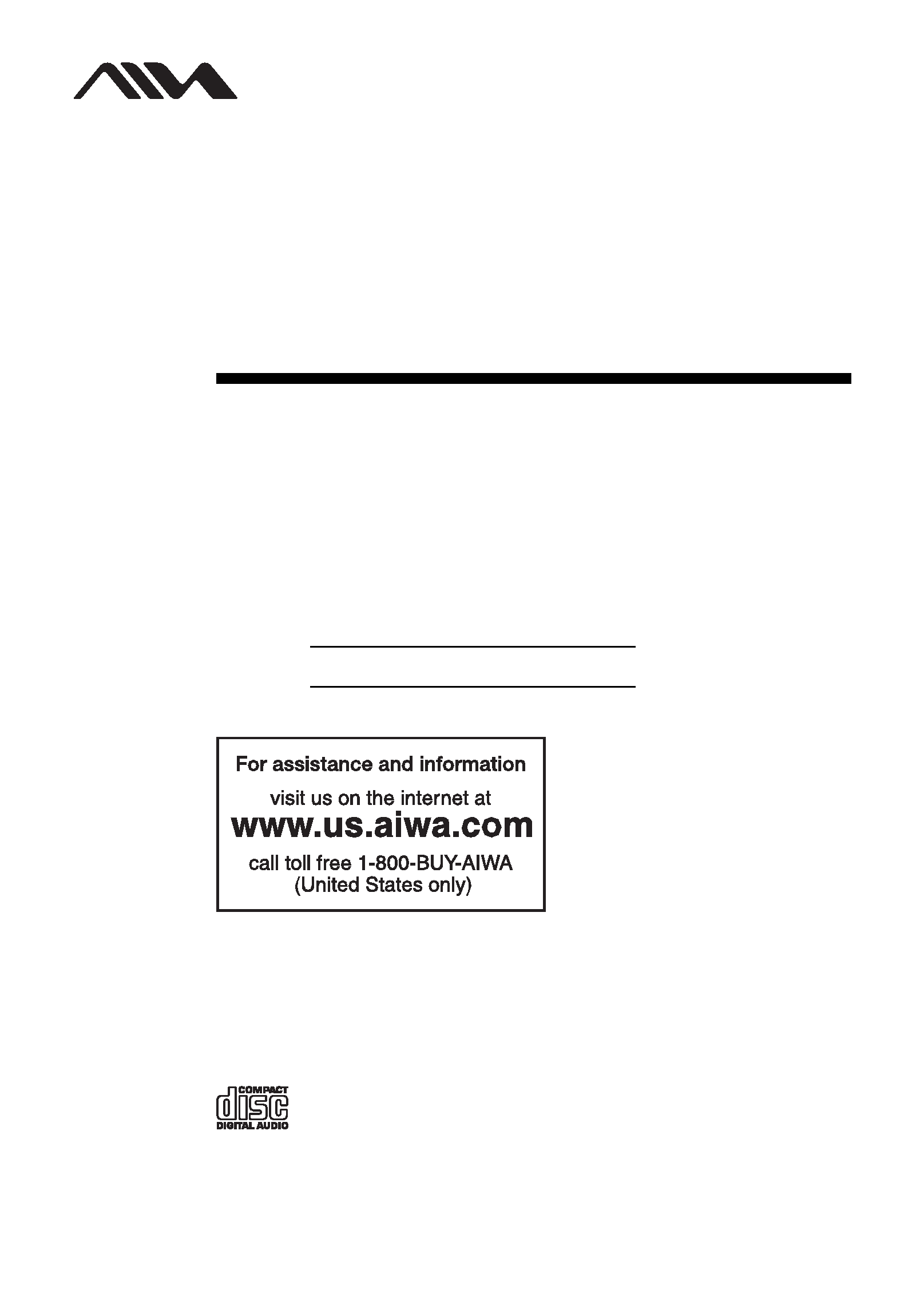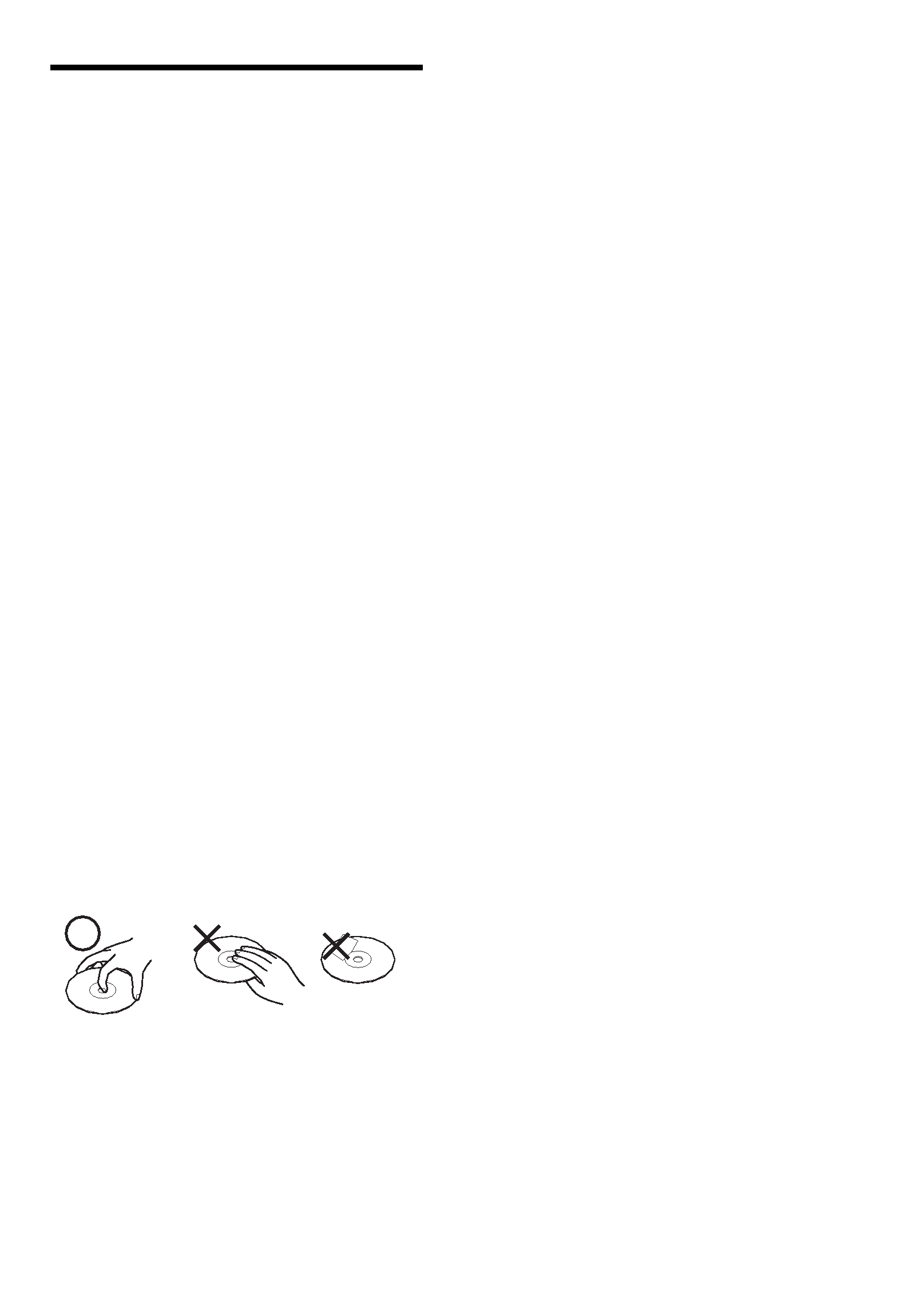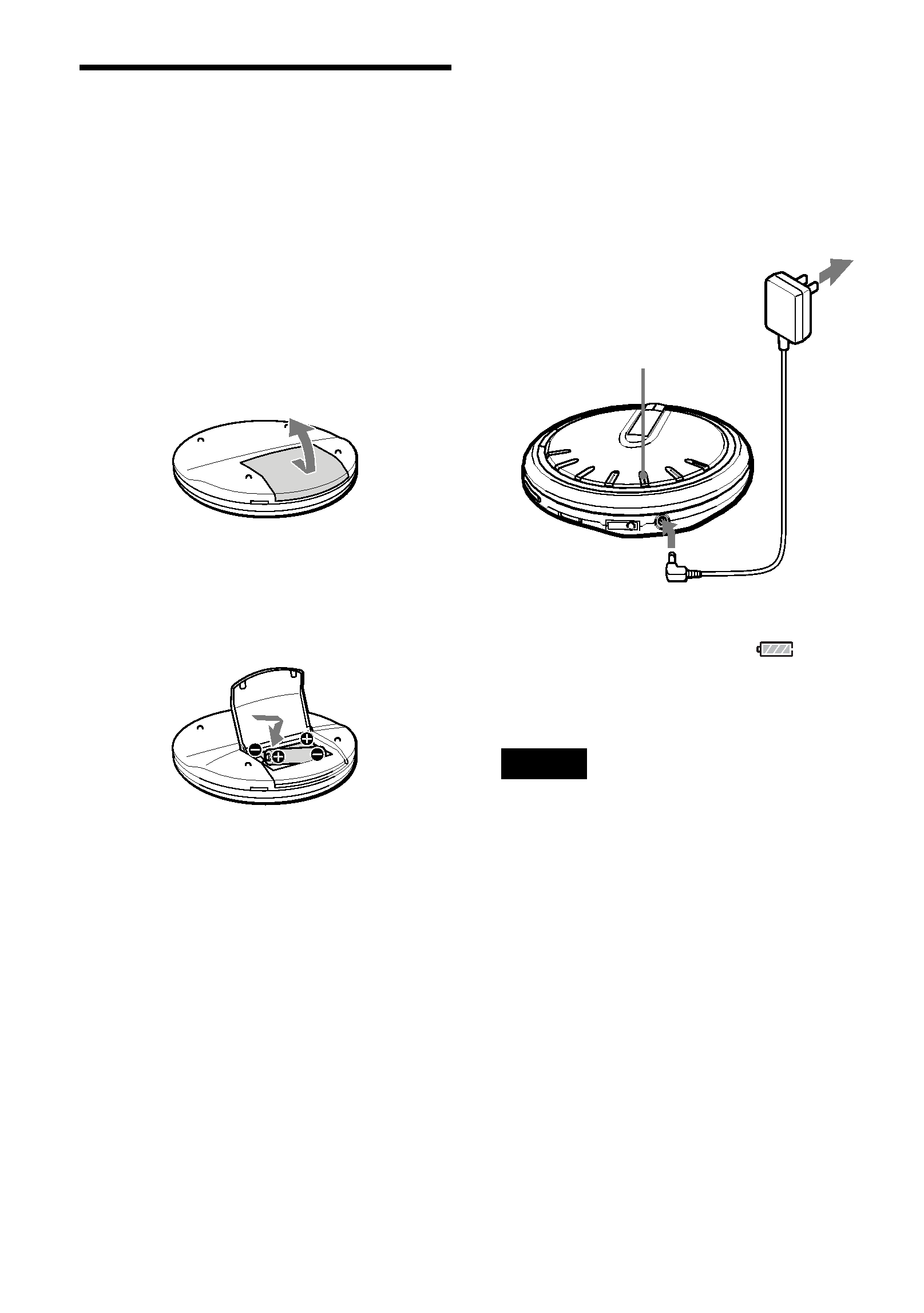
© 2003 Sony Corporation
3-253-771-21(1)
XP-ZV71/ZV71C
Portable
CD Player
Operating Instructions
Owner's Record
The model number and the serial number are located at the rear of the CD
player. Record these numbers in the spaces provided below. Refer to them
whenever you call upon your Aiwa dealer regarding this product.
Model No.
Serial No.

2
WARNING
To prevent fire or shock hazard, do not expose
the unit to rain or moisture.
Do not install the appliance in a confined
space, such as a bookcase or built-in cabinet.
To prevent fire, do not cover the ventilation of
the apparatus with newspapers, tablecloths,
curtains, etc. And don't place lighted candles
on the apparatus.
To prevent fire or shock hazard, do not place
objects filled with liquids, such as vases, on
the apparatus.
CAUTION
The use of optical instruments with this
product will increase eye hazard.
Certain countries may regulate disposal of the
battery used to power this product. Please
consult with your local authority.
CAUTION
· INVISIBLE LASER RADIATION WHEN
OPEN
· DO NOT STARE INTO BEAM OR VIEW
DIRECTLY WITH OPTICAL
INSTRUMENT
The validity of the CE marking is restricted to
only those countries where it is legally
enforced, mainly in the countries EEA
(European Economic Area).
For the customers in the USA
This equipment has been tested and found to
comply with the limits for a Class B digital
device, pursuant to Part 15 of the FCC Rules.
These limits are designed to provide
reasonable protection against harmful
interference in a residential installation. This
equipment generates, uses, and can radiate
radio frequency energy and, if not installed and
used in accordance with the instructions, may
cause harmful interference to radio
communications. However, there is no
Table of Contents
guarantee that interference will not occur in a
particular installation. If this equipment does
cause harmful interference to radio or
television reception, which can be determined
by turning the equipment off and on, the user
is encouraged to try to correct the interference
by one or more of the following measures:
Reorient or relocate the receiving antenna.
Increase the separation between the
equipment and receiver.
Connect the equipment into an outlet on a
circuit
Consult the dealer or an experienced radio/
TV technician for help.
You are cautioned that any changes or
modifications not expressly approved in this
manual could void your authority to operate
this equipment.
Precautions ............................. 3
Using on the Rechargeable
Batteries .............................. 4
Using on the dry batteries ....... 6
Using on the AC power
adaptor ................................ 7
Preparations ............................ 8
Loading a disc ......................... 9
Playing a disc ........................ 10
Playback options ................... 13
Notes on MP3 discs .............. 20
Maintenance .......................... 22
Troubleshooting guide ........... 23
Specifications ........................ 23
Supplied accessories ............ 24
Locating the controls ............. 25

3
Precautions
On safety
· Should any solid objects or liquid fall into
the CD player, unplug it and have it checked
by qualified personnel before operating it
any further.
· Do not put any foreign objects in the DC IN
4.5V (external power input) jack.
On the CD player
· Keep the lens on the CD player clean and do
not touch it. If you do so, the lens may be
damaged and the CD player will not operate
properly.
· Do not put any heavy object on top of the
CD player. The CD player and the CD may
be damaged.
· Do not leave the CD player in a location near
heat sources, or in a place subject to direct
sunlight, excessive dust or sand, moisture,
rain, mechanical shock, unleveled surface, or
in a car with its windows closed.
· If the CD player causes interference to the
radio or television reception, turn off the CD
player or move it away from the radio or
television.
· Discs with non-standard shapes (e.g., heart,
square, star) cannot be played on this CD
player. Attempting to do so may damage the
CD player. Do not use such discs.
On handling CDs
· To keep the CD clean, handle it by its edge.
Do not touch the surface.
· Do not stick paper or tape onto the CD.
· Do not expose the CD to direct sunlight or
heat sources such as hot air ducts. Do not
leave the CD in a car parked under direct
sunlight.
On headphones/earphones
Road safety
Do not use headphones/earphones while
driving, cycling, or operating any motorized
vehicle. It may create a traffic hazard and is
illegal in some area. It can also be potentially
dangerous to play your headsets at high
volume while walking, especially at pedestrian
crossings. You should exercise extreme
caution or discontinue use in potentially
hazardous situations.
Preventing hearing damage
Avoid using headphones/earphones at high
volume. Hearing experts advise against
continuous, loud and extended play. If you
experience a ringing in your ears, reduce
volume or discontinue use.
Consideration for others
Keep the volume at a moderate level. This will
allow you to hear outside sounds and to be
considerate to the people around you.
Usable discs
This CD player can play CD-Rs/RWs recorded
in the CD-DA format* and MP3** files
recorded in the CD-ROM format, but playback
capability may vary depending on the quality
of the disc and the condition of the recording
device. Discs recorded in the formats other
than those mentioned above, for example in
VCD or CD-I format, cannot be played.
In this manual, CD, CD-R and CD-RW are
referred as "discs."
* CD-DA is the abbreviation for Compact Disc
Digital Audio. It is a recording standard used
for the Audio CDs.
**MP3 (MPEG 1 Audio Layer-3) is a standard
technology and format for compressing a sound
sequence.
Not these ways

4
Using on the
Rechargeable Batteries
When using on the rechargeable batteries for
the first time, charge them until "CHARGE
ON" disappears from the display. You can use
only the following rechargeable batteries for
your CD player:
Commercially-available size AA Ni-MH
rechargeable batteries of 1.2 V DC, 700 mAh
1 Open the battery compartment lid
inside your CD player.
2 Insert two rechargeable batteries
by matching the ) to the diagram
in the battery compartment and
close the lid until it clicks into
place.
Insert the
( end first (for both batteries).
3 Connect the AC power adaptor
(not supplied) to the DC IN 4.5 V
jack of your CD player and an AC
outlet, and then press and hold s/
OFF/CHARGE for about 1 second
while the unit is turned off to start
charging.
"CHARGE ON" appears in the display,
and the indicator sections of
light up
in succession. When the batteries are
completely charged, all indications in the
display disappear.
Notes
· During charging, the CD player and the
rechargeable batteries become hot. This
poses no danger.
· If you press
ca/ENTER during charging,
charging stops and playback of the CD starts.
· Use only the commercially-available AC
power adaptor whose rated output is 4.5 V
DC, 500 mA.
s/OFF/CHARGE button
AC power
adaptor
to an AC outlet
to DC IN 4.5 V

5
When to charge the recharge-
able batteries
You can check the remaining power of the
batteries in the display.
Low-BATT
To keep the original battery capacity for a long
time, charge the batteries only when they are
completely depleted.
Notes
· The indicator sections of
roughly show
the remaining battery power. One section
does not always indicate one-fourth of the
battery power.
· Depending on operating conditions, the
indicator sections of
may increase or
decrease.
When to replace the rechargeable
batteries
If the battery life becomes shorter by about
half, replace the batteries with new
rechargeable batteries.
Note on the rechargeable batteries
If the battery is new or has not been used for a
long time, it may not be charged completely
until you charge and discharge it several times.
Battery power is full.
Battery power is getting low.
Battery power is low.
Batteries are depleted.
